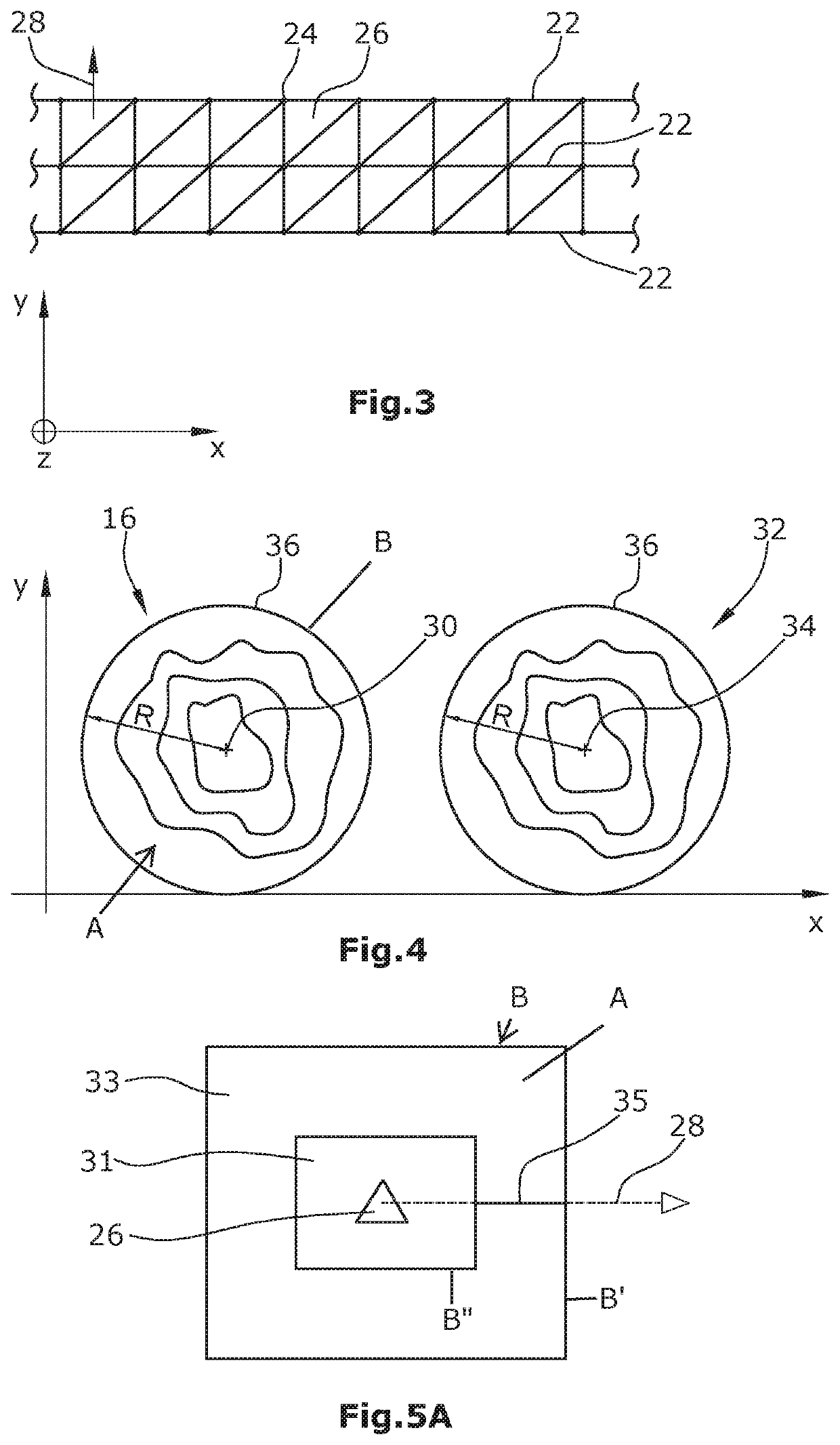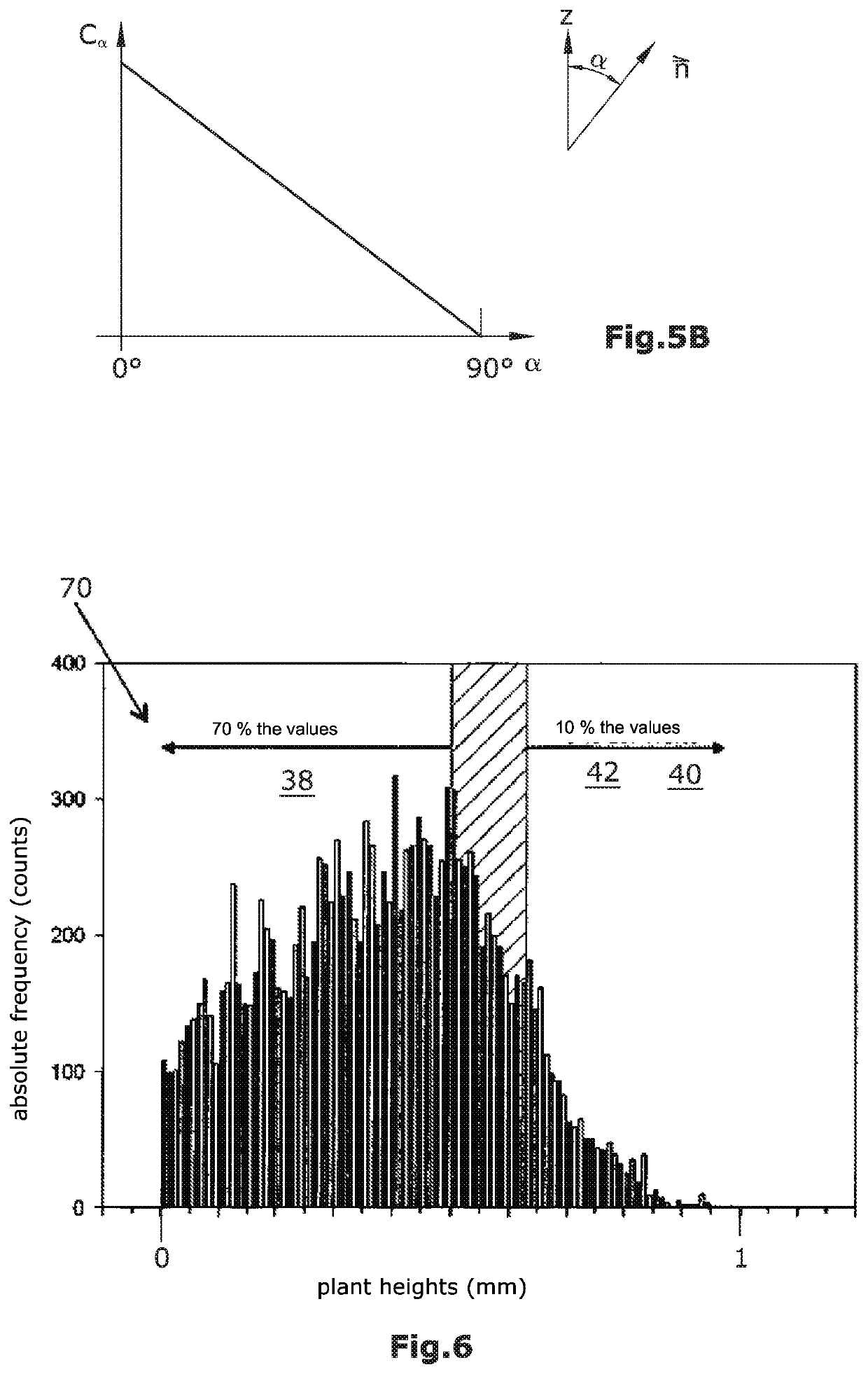Method for the characterization of objects
a technology for characterization and objects, applied in the field of characterization of objects, can solve problems such as difficult and reliable detection of similar, but not exactly identical objects
- Summary
- Abstract
- Description
- Claims
- Application Information
AI Technical Summary
Benefits of technology
Problems solved by technology
Method used
Image
Examples
Embodiment Construction
[0040]In a method for characterizing an object by means of distance measurement, line-wise elevation profiles are first determined by means of distance measurement and then evaluated in a suitable manner for the characterization of the object, wherein the characterization of the object includes the position and / or at least one object-specific parameter of the object. In this context, a laser triangulation system as illustrated in FIG. 1 can be used for distance measurement. The system comprises a sensor 10 in which a line laser 12 is arranged which illuminates an object 16 via a mirror 14. Via a further mirror 20, the line generated by the laser 12 on the object 16 is imaged by a camera 18 which is also arranged in the sensor 10. The line on the object 16 is distorted by the topology of the object 16. Based on this distortion, an evaluation means which is connected to the camera, can determine an elevation profile along the line generated by the laser 12. Thereby, according to the c...
PUM
 Login to View More
Login to View More Abstract
Description
Claims
Application Information
 Login to View More
Login to View More - R&D
- Intellectual Property
- Life Sciences
- Materials
- Tech Scout
- Unparalleled Data Quality
- Higher Quality Content
- 60% Fewer Hallucinations
Browse by: Latest US Patents, China's latest patents, Technical Efficacy Thesaurus, Application Domain, Technology Topic, Popular Technical Reports.
© 2025 PatSnap. All rights reserved.Legal|Privacy policy|Modern Slavery Act Transparency Statement|Sitemap|About US| Contact US: help@patsnap.com



